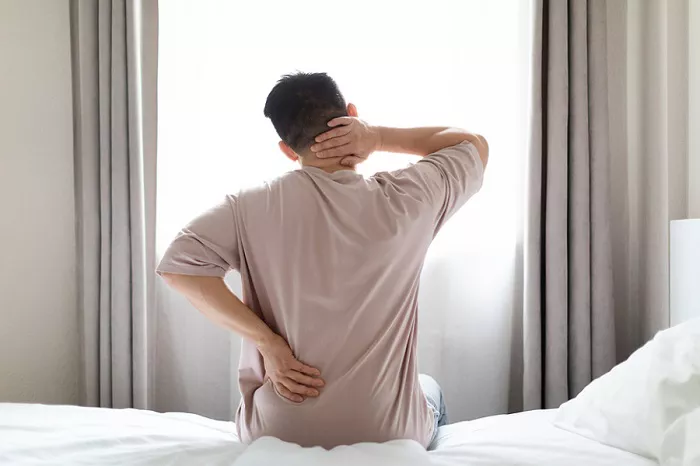Low testosterone affects nearly 40% of men over 45, but most don’t realize it’s behind their fatigue, weight gain, and low drive. The right treatment can transform your health – but with so many options from TRT to natural boosters, how do you choose what actually works? This 2,000+ word guide cuts through the hype to reveal the most effective testosterone treatments backed by science and real-world results.
Understanding Low Testosterone: More Than Just Sex Drive
Testosterone does far more than fuel your libido. This crucial hormone impacts:
- Muscle mass and bone density
- Fat distribution and metabolism
- Red blood cell production
- Cognitive function and mood
- Cardiovascular health
When levels drop below 300 ng/dL, men experience classic symptoms: constant fatigue, stubborn belly fat, depression, and erectile dysfunction. But here’s what most doctors won’t tell you: the standard “normal” range is too broad. Many men feel best between 600-900 ng/dL.
Medical Testosterone Replacement Therapy (TRT): The Gold Standard
Testosterone Injections: Most Effective Method
Injections remain the most reliable TRT option. Benefits include:
- Precise dosing control
- Bypasses liver metabolism
- Cost-effective long-term
Protocols That Work:
- Cypionate/Enanthate: 50-100mg twice weekly maintains stable levels
- Undecanoate: Every 10-14 weeks for those who hate frequent shots
Reddit User Experience: “Switching from weekly to twice-weekly injections eliminated my energy crashes and mood swings.”
Transdermal Gels and Patches: Convenient but Flawed
While gels like AndroGel are popular, they have drawbacks:
- Absorption issues (especially if sweating)
- Risk of transferring to partners/kids
- More expensive than injections
Pro Tip: Apply to shoulders/upper arms after showering for best absorption.
Subcutaneous Pellets: The Set-and-Forget Option
Inserted every 3-6 months, pellets offer:
- No frequent dosing
- Steady hormone release
The Catch:
- Higher upfront cost
- Minor surgical procedure required
- Can’t adjust dose once implanted
Natural Testosterone Boosters That Actually Work
For men with borderline low T (300-500 ng/dL), these evidence-based approaches may help:
Nutrient Optimization
- Zinc: 30-50mg daily boosts free testosterone
- Vitamin D: 5,000 IU daily correlates with higher T levels
- Magnesium: 400mg glycinate improves sleep quality and T production
Lifestyle Changes That Move the Needle
- Strength Training: Compound lifts like squats increase acute T spikes
- Sleep Quality: Just one week of 5-hour nights crashes testosterone by 15%
- Stress Reduction: Chronic high cortisol directly suppresses T production
Herbal Supporters With Science Behind Them
- Ashwagandha: 600mg daily increased T by 15% in stressed men
- Tongkat Ali: Malaysian herb shown to boost free testosterone
- Fenugreek: May help with libido and mild T support
Cutting-Edge Treatments Gaining Traction
hCG Therapy: Preserve Fertility on TRT
Human Chorionic Gonadotropin (hCG):
- Mimics LH to keep natural production going
- Prevents testicular shrinkage
- Often combined with traditional TRT
SERMs: The Off-Label Option
Selective Estrogen Receptor Modulators like Clomid:
- Stimulate natural production
- Good for younger men wanting fertility
- Doesn’t work for everyone long-term
Peptide Therapy
Compounds like Ipamorelin:
- Stimulate growth hormone release
- May enhance TRT effects
- Still being researched
Critical Mistakes to Avoid With Testosterone Treatment
Not Getting Full Labs First
-
- Must check: Total T, Free T, SHBG, Estradiol, PSA
- Many doctors only test total testosterone
Ignoring Estrogen Balance
-
- High E2 causes gynecomastia and water retention
- Low E2 leads to joint pain and poor libido
Neglecting Post-Cycle Therapy
-
- Coming off TRT requires proper tapering
- hCG or SERMs help restart natural production
Expecting Instant Results
-
- Most men feel better in 3-6 weeks
- Full benefits take 3-6 months
The Truth About Testosterone and Long-Term Health
Contrary to outdated beliefs, properly managed TRT:
- Doesn’t cause prostate cancer (recent studies show no link)
- May improve heart health by reducing visceral fat
- Could extend lifespan by preserving muscle and cognitive function
The key is working with a hormone specialist – not just any GP – who understands optimal (not just “normal”) ranges.
Finding the Right Doctor: What to Look For
The best hormone specialists:
- Treat symptoms, not just numbers
- Check comprehensive panels (not just total T)
- Offer multiple treatment options
- Monitor hematocrit and estrogen
- Understand nutrition’s role in hormone health
Red Flag: Doctors who refuse to prescribe injections or claim gels are just as effective.
Conclusion
There’s no one-size-fits-all testosterone treatment. The best approach depends on:
- Your baseline levels
- Age and fertility goals
- Lifestyle factors
- Budget and preferences
For most men, injections with occasional hCG provide the best balance of results and convenience. Younger men with borderline low T may succeed with aggressive lifestyle changes and natural boosters first.
Remember: Testosterone optimization isn’t about chasing numbers – it’s about restoring vitality. When properly managed, the right treatment can add quality years to your life and life to your years. The first step? Getting comprehensive labs and consulting with a true hormone expert. Your best years may still be ahead.
Related topics:
The Best 5 Testosterone Boosters for Older Men
The Best 5 Drugs for Low Testosterone
The Best 10 Testosterone Boosters for Male Enhancement


